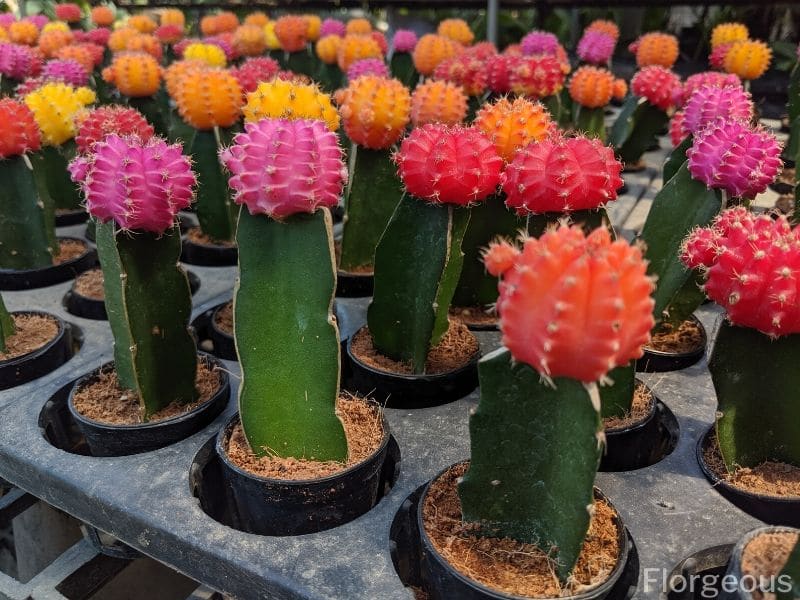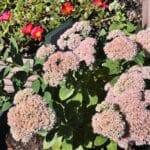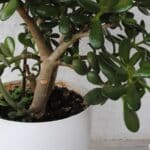The cactus family is known for their distinct spines, areoles, and plump, often ribbed stems. Most cacti come in different shades of green and although unique-looking, they can blend well with other plants, in the wild or indoors.
They are not necessarily vibrant-looking and the colors are often brought about by their showy blooms. But one species has made a name for its brightly bizarre stems and growth – the Moon cactus. If you’re looking for a splash of color in your cactus collection, this novelty plant is for you.
What is a Moon Cactus?

Gymnocalycium mihanovichii var. friedrichii ‘Hibotan’ is the scientific name of the Moon cactus, also known as Ruby Ball Cactus. It is a 2-4 in (5-10 cm) globular cactus that got the name from its shape and the smaller “moons” or offsets that appear on the plant upon maturity.
One of the widely cultivated cacti in the genus, it was first introduced in Japan in 1948 offering collectors a range of colors and combinations like red, pink, orange, yellow, and purple. Because of this, they are also called “hotheads”, “ruby ball”, and “neon cactus” (1).
Unlike typical cacti, Moon Cacti are not capable of producing chlorophyll on their own due to a genetic mutation, and they rely on a grafting process.
The colorful top, often referred to as the “moon,” is a result of grafting Gymnocalycium mihanovichii onto a hardy rootstock cactus, usually green cactus species such as Hylocereus cactus or Cereus peruvianus. The rootstock cactus provides the necessary chlorophyll and support for the colorful Gymnocalycium, creating a captivating and visually appealing plant.
What is a Moon Cactus flower?
Moon cacti rarely produce vibrant flowers, but when they do, they bloom during spring, in April or May.
The flowers are typically pink, orange, or yellow in color and can bloom indoors. The colorful part of the moon cactus is the scion, which acts as the base for the flower’s growth.
The blossoms are relatively short-lived but add an extra touch of beauty to the already visually striking plant.
Caring for Your Moon Cactus
Growing a moon cacti indoors may seem difficult being in a color-rich and grafted state but it is relatively easy that many enthusiasts begin with this plant. Caring for this cactus is almost the same as when growing a Dragon fruit plant with some additional considerations to keep the Gymnocalycium looking its best.
Soil
Like the Christmas cactus or other species, the moon cactus plant requires soil that drains well and is not too rich in nutrients. The best soil for moon cactus plants is aerated sandy soil that allows water to drain well. Adding pebbles or small stones to a potting mix can also create suitable cactus soil.
Moon cacti prefer a potting soil mix that is acidic to neutral. The soil should be very porous in order to avoid moisture buildup and the inevitable appearance of pests such as scale insects that feed off of the cactus’ roots or cause systemic rot if left untreated.
Moon cacti must have well-drained soil. These cacti enjoy drought but hate moisture. The soil should be relatively poor in nutrients.
This careful soil selection promotes a healthy environment for moon cacti, supporting their vibrant and colorful growth.
Light and Water
The moon cactus plants need bright indirect light but not too much direct sunlight, which will cause the ball crown to scorch. They are ideally placed on the bright window where they can receive the less harsh morning sun. A series of individually potted Moon cactus also make a striking display in this location (3).
During the growing season, you should only water the moon cactus. Do not water it in the winter months.
Fertilizing
Feed sparingly, if at all. A diluted dose of cactus fertilizer once a month during spring and summer months is sufficient. Avoid fertilizing moon cactuses in winter when growth slows.
Pruning and Maintenance
No major pruning is necessary. Simply remove any discolored or damaged segments with sterilized shears.
Occasionally, the grafted head might outgrow the base. If so, you can carefully detach and re-graft it onto a larger base using the cleft grafting technique.
Common Diseases and Pests
Moon cacti are generally hardy plants, but these indoor plants can still be affected by a few common diseases and pests. Spider mites and mealybugs are the most common pests that infest moon cacti. Early infestations can be treated by removing the pests with a cotton swab soaked in rubbing alcohol. Larger infestations that encompass the entire plant require treatment with an insecticidal soap or neem oil to kill the pests.
In terms of diseases, moon cacti can be affected by various issues. Overwatering is one of the most common problems that beginner cacti enthusiasts face. This will lead to root damage, and the plants will slowly succumb to root rot. They will eventually lose their trademark green color and become mushy.
Grafting and Repotting moon cactus
The Moon cactus needs to be grafted or it will not survive, especially during its vegetative state so a stable dark green rootstock is required not just to provide food but to anchor the plant too.
The Dragon fruit cactus base is ideal because the triangular shape of the stem provides enough surface area that the scion can attach to and it is also an extremely adaptable plant.
The crown will eventually grow bigger and produce offsets so it needs to be regrafted to a new, bigger rootstock.
Repotting your cactus should be done with extra care since grafted plants, although established, tend to be more sensitive. The growing medium must be replaced once every 1-2 years and the soil should be kept quick-draining so a mixture that is high in sand and perlite is recommended (2).
FAQs
How long do moon cactus live?
Moon cacti (Gymnocalycium mihanovichii), also known as grafted cacti, can live for a few years with proper care. However, their lifespan can vary depending on factors such as growing conditions, care, and the age of the rootstock. In optimal conditions, they may live for five years or more.
How do I know if my Moon Cactus is dying?
Signs that your Moon Cactus may be dying include yellowing or shriveling of the stem or discoloration of the graft site. Overwatering, underwatering, or exposure to extreme temperatures can contribute to their decline. Monitor their appearance, adjust care accordingly, and inspect for any signs of distress.
Is Moon Cactus easy to care for?
Yes, Moon Cacti are generally considered easy to care for. They prefer bright, indirect sunlight and well-draining soil. Allow the soil to dry between waterings, and be cautious not to overwater, as they are susceptible to root rot. With the right conditions, Moon Cacti can thrive as attractive and low-maintenance houseplants.
Final thoughts
In conclusion, proper moon cactus care involves providing adequate sunlight, well-draining soil, and balanced watering to ensure their vibrant and healthy growth. Regular monitoring for signs of pests or diseases, coupled with occasional fertilization, contributes to the overall well-being of these unique and colorful succulents.
With attention to these fundamental care practices, enthusiasts can enjoy the beauty of moon cacti while fostering their resilience and longevity in indoor or outdoor settings.
If you love learning about cacti, check these cactus names.
References
Reference list
(1) Plant of the Week: Grafted Cactus. University of Arkansas. 2020. (online) https://www.uaex.edu/yard-garden/resource-library/plant-week/Grafted-Cactus-Neon-Cacti-Moon-Cactus-Hibotan-Cactus-11-27-2015.aspx
(2) Staehling, A. Happy Houseplants. Chronicle Books. 2017. P. 96.
(3) Baldwin. D. Succulents Simplified. Timber Press. 2013. P. 272.
Close






